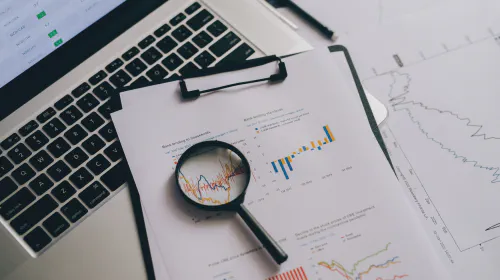Digital Security and Privacy: Real-Life Examples You Should Know - Blog Post
Salomon Kisters
Jul 10, 2023This post may contain affiliate links. If you use these links to buy something we may earn a commission. Thanks!
The digital landscape has become an integral part of our daily lives. We shop online, bank online, share personal information, and connect with others through social media.
While the convenience and opportunities that digital platforms offer are undeniable, they also pose potential threats to our security and privacy.
In this blog post, we will explore some real-life examples of digital security and privacy breaches and discuss how we can protect ourselves in today’s digital age.
1. Phishing Attacks
Phishing attacks have become increasingly sophisticated and are one of the most common threats in the digital realm. Cybercriminals use deceptive techniques to trick individuals into revealing their sensitive information such as usernames, passwords, or credit card details. A prevalent example is receiving an email that appears to be from a trusted organization, such as a bank or an online marketplace, asking for account verification. The email may contain a convincing link that leads to a fake website designed to steal personal information.
Protecting yourself against phishing attacks requires vigilance and awareness. Always scrutinize emails for suspicious signs, such as spelling or grammatical errors, generic salutations, or requests for personal information. Instead of clicking on links in emails, manually enter the website address in your browser or use saved bookmarks. Additionally, when providing personal information online, ensure the website uses encryption (look for the padlock symbol and “https” in the URL).
2. Data Breaches
Data breaches have become an all-too-common occurrence, with well-known companies falling victim to cyberattacks. In these incidents, cybercriminals infiltrate an organization’s network and gain access to vast amounts of personal information, including names, addresses, social security numbers, and even credit card details. This stolen data often finds its way into the hands of identity thieves or is sold on the dark web.
While data breaches are beyond our control, we can take steps to minimize the impact. One crucial measure is to regularly monitor our bank accounts, credit cards, and credit reports for any unauthorized activity. Many financial institutions offer text or email alerts for suspicious transactions, enabling us to respond quickly if our accounts are compromised. Additionally, using strong, unique passwords for every online account can help mitigate the damage if one account is breached.
3. Social Engineering
Social engineering is a technique where cybercriminals exploit human psychology to gain access to sensitive information. They may impersonate trusted individuals, such as colleagues, friends, or family members, to deceive us into revealing personal information or granting unauthorized access. A common example is a phone call from someone pretending to be a tech support representative, claiming there is a problem with your computer and requesting remote access to fix it.
To protect yourself from social engineering attacks, it is crucial to verify the identity of the person or organization contacting you. If someone claims to be from a company, hang up and call the official customer service number to confirm their legitimacy. Be cautious about sharing personal or financial information over the phone or through email. Remember, legitimate organizations will never ask for sensitive information without proper authentication procedures.
4. Webcam Spying
Webcam spying is a disturbing invasion of privacy that has gained notoriety in recent years. Hackers can gain access to webcams without the victim’s knowledge, allowing them to remotely watch and record video footage. These breaches of privacy can occur through malware-infected links, malicious software, or even exploiting weak passwords.
To protect yourself from webcam spying, it is essential to take precautions. Ensure that your computer’s operating system, antivirus, and webcam software are up to date to mitigate potential vulnerabilities. Consider covering your webcam with a physical barrier, such as a piece of tape or a webcam cover, when not in use. Most importantly, be cautious when clicking on links or downloading files from untrusted sources, as this can be an entry point for malware that facilitates webcam spying.
5. Public Wi-Fi
Public Wi-Fi networks can be convenient when we need to connect on the go, but they also pose significant security risks. These networks often lack encryption, allowing hackers to intercept data transmitted between our devices and the network. Cybercriminals can then capture sensitive information, such as login credentials or banking details, as we browse the internet or perform online transactions.
To protect yourself on public Wi-Fi networks, refrain from accessing sensitive information or performing financial transactions unless you are using a secured connection. Consider using a virtual private network (VPN) to encrypt your internet traffic, providing an additional layer of security. Additionally, ensure that your devices are not set to connect automatically to unknown Wi-Fi networks, as this minimizes the chances of accidentally connecting to malicious networks.
Conclusion
In today’s digital age, staying safe and protecting our privacy online is more important than ever. By being vigilant, staying informed, and implementing best practices for digital security, we can reduce the risk of falling victim to cyber threats.
Remember to be cautious of phishing attempts, monitor your accounts for unauthorized activity, verify the legitimacy of those asking for personal information, take steps to prevent webcam spying, and exercise caution when using public Wi-Fi networks.
By implementing these measures, you can navigate the digital landscape with confidence and peace of mind. Stay safe!
Stay informed with the latest insights in Crypto, Blockchain, and Cyber-Security! Subscribe to our newsletter now to receive exclusive updates, expert analyses, and current developments directly to your inbox. Don't miss the opportunity to expand your knowledge and stay up-to-date.
Love what you're reading? Subscribe for top stories in Crypto, Blockchain, and Cyber-Security. Stay informed with exclusive updates.
Please note that the Content may have been generated with the Help of AI. The editorial content of OriginStamp AG does not constitute a recommendation for investment or purchase advice. In principle, an investment can also lead to a total loss. Therefore, please seek advice before making an investment decision.

Decoding Canada's Digital Privacy Act
Understand the impact of Canada's Digital Privacy Act on personal data protection. Learn about the legislation's key provisions and how it affects online privacy.

What is Blockchain Analytics, and How Does It Work?
You might have heard of data analytics before. But what is blockchain analytics, and how does it work?

Enhancing Customer Loyalty with Digital Payments: Benefits & Strategies
Learn how digital payments can enhance customer loyalty by offering convenience, security, and personalized experiences. Explore strategies to implement seamless payment solutions.
Protect your documents
Your gateway to unforgeable data. Imprint the authenticity of your information with our blockchain timestamp